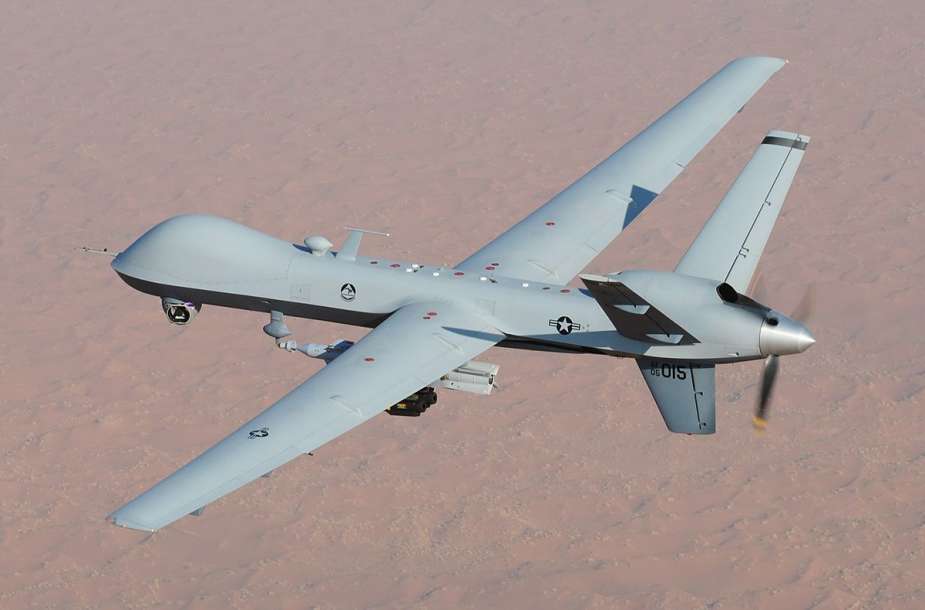Breaking news
Royal Air Force receives first Protector RG1 drone from General Atomics.
The Royal Air Force (RAF) received its first Protector RG.1 drone, which was transported from the General Atomics facility in California to the United Kingdom on September 29, 2023. This acquisition is part of the UK's initiative to modernize its drone fleet.
Follow Air Recognition on Google News at this link
 The Protector RG.1, also known by the manufacturer's designation as the MQ-9B SkyGuardian, has a flight endurance of up to 40 hours. (Picture source: Wikimedia)
The Protector RG.1, also known by the manufacturer's designation as the MQ-9B SkyGuardian, has a flight endurance of up to 40 hours. (Picture source: Wikimedia)
The UK Ministry of Defense had already signed an initial £65 million contract for three Protector drones in July 2020, with an option for 13 additional aircraft. This initiative was reinforced by a collaboration agreement with Belgium on their respective MQ-9B programs. In July 2021, the UK confirmed its commitment by signing a contract for the acquisition of 13 additional Protector drones, planned to be integrated into operations by the end of 2023.
The Protector RG.1, also known by the manufacturer's designation as the MQ-9B SkyGuardian, has a flight endurance of up to 40 hours. It can change remote pilots every 6 to 8 hours and is capable of carrying out both strategic reconnaissance and tactical support missions.
Its standard armament includes the Brimstone lightweight air-to-ground missile as well as the 250-kilogram Paveway IV laser-guided bomb. The Protector RG.1 is therefore clearly a drone dedicated to precision strikes.
The Protector is equipped with the revolutionary Lynx multi-mode radar and an advanced electro-optical/infrared sensor. It also has automatic takeoff and landing capabilities. With a wingspan of 79 feet (24m), the Protector has a longer wingspan than its predecessors, improving its aerodynamic capabilities.
Training for British remote pilots began last month in Grand Forks, North Dakota. The RAF intends to achieve initial operating capability (IOC) for the Protector RG.1 in the second half of 2024. At least five of these drones are expected to be delivered by then.
The Protector can be configured for a wide range of intelligence, surveillance, target acquisition, and reconnaissance (ISTAR) operations. These include humanitarian assistance, disaster relief, search and rescue, law enforcement, border control, and even anti-submarine warfare.
Designed to meet NATO and UK standards (STANAG 4671 & DEFSTAN 00-970), the Protector also complies with civil airspace requirements globally. When equipped with General Atomics Aeronautical Systems, Inc.'s first-generation detect-and-avoid system (GA-ASI), the Protector will integrate seamlessly into normal air traffic, just like commercial aircraft.
Sixteen of these very high-tech machines, derived from the famous MQ-9 Reaper, are due to enter service between 2024 and 2025.

























